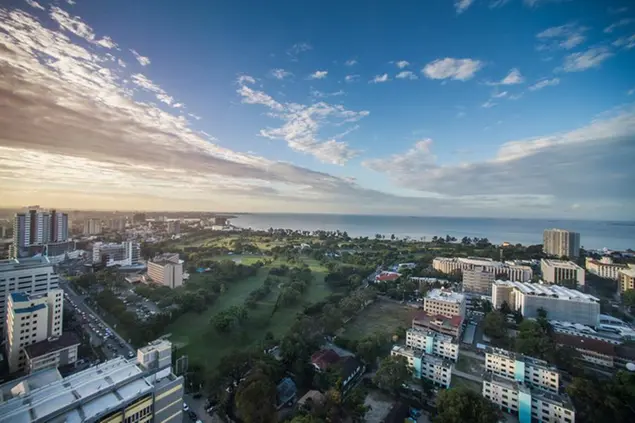PHOTO
Increasing infrastructure development along the main transport routes in the East African Community bloc could threaten business along the Northern Corridor, even though it could be a good thing for the region.
Officials charged with managing the Northern Corridor have been assessing this bittersweet revelation with hope, seeing threats on the one hand and an overall rise in efficiency of travel and transportation on the other.
The Northern Corridor originates from Kenya’s Mombasa port but is the main artery of supplies for countries like South Sudan, Uganda, Rwanda and the Democratic Republic of Congo (DRC). Its rival, the Central Corridor, flows from Dar es Salaam and is the supply route to Burundi, DRC, Uganda and Rwanda.
For years, the Northern Corridor received more business, profiting from a busier port in Mombasa, better-paved highways and a standard gauge railway (SGR). The Central Corridor has been upgrading its facilities too.
On the face of it, it means the Northern Corridor might start losing business to the competition. But not if it upgrades itself too.
Incoming Northern Corridor Transit and Transport Coordination Authority (NCTTCA) executive secretary John Deng Diar Diing from South Sudan said he would prioritise road safety and the development of infrastructure, and an upgrade could be one way to retain clientele.
Dr Diing takes over from outgoing boss Omae Nyarandi from Kenya, whose term ends this month. He said insecurity and increasing non-tariff barriers (NTBs) remain key hindrances to trade as Kenya competes with Tanzania for business.
The Council of Ministers announced the new changes in a joint communiqué during their 36th meeting in Nairobi last month, which marked the end of the six-year term for Mr Nyarandi.
Dr Diing, who has been serving the authority as a deputy director of infrastructure development and management, blamed insecurity in South Sudan and inadequate connecting road networks for the delays in the delivery of cargo.“Coming from South Sudan and having worked in Kenya for several years, my priority is advising the government to tone down regional politics, which have resulted in increasing insecurity along the corridor as the authority strengthens highway policing.“As NCTTCA, we have no control over politics in any country, but through various organs, we can advise on various ways to facilitate trade,” said Dr Diing.
The new boss acknowledged various infrastructure initiatives in the Central Corridor, which might pose a threat to the Northern Corridor.
The Northern Corridor is 1,700km long, while the Central Corridor is 1,300km long. The Northern Corridor’s advantage has often been its fewer border crossings and more efficient port. But the Central Corridor is often seen as safer, with fewer incidents of attacks on trucks by armed groups.
“There is no doubt the development of the railway will be a game-changer in the transport sector across all corridors. That is why the Northern Corridor needs to ease pressure from the roads to increase the speed of cargo uptake from Mombasa port to the rest of East Africa and reduce accidents and cargo loss.“As NCTTA, we shall push for the construction of SGR to connect Naivasha and Kampala and to South Sudan,” said the new executive secretary.
This month, Tanzania launched its SGR, which will, once completed, link Dar es Salaam port to Rwanda, Uganda, Burundi and the Democratic Republic of the Congo, as part of the East African railway master plan. The train currently serves shorter transportation services to the completed phase in Tanzania.
Dar es Salaam port director Mrisho Mrisho said the port is also under expansion, with targets of handling 24 million metric tonnes of cargo in the 2023–24 fiscal year after completion of the Dar es Salaam Maritime Gateway Programme, seen as one way of improving efficiency.
The Port of Dar es Salaam handled 21.46 million metric tonnes in 2022–23, surpassing the 19.6 million metric tonnes target by more than two million metric tonnes. Data from the last six months from the Tanzania “Revenue Authority shows that 40 percent of customs revenue comes from the Dar es Salaam port,” said Mr Mrisho.
Regarding customs processes across the region, Dr Diing expressed concerns over the DRC and South Sudan’s snail speed in adopting technology to speed up cargo documentation and reduce long queues at their respective borders.“The Kenya Ports Authority has played a big role in ensuring cargo is cleared on time. Now we need to address several NTBs along the corridor, and the two countries need to adopt technology in paper cargo documentation,” he said.
Dr Diing said the authority is working with local agencies to improve safety in all means of transport on the corridor. The corridor has some of the most dangerous highways in the world, according to data from the World Health Organisation.
Accidents and security also hurt timely delivery of goods, the official admitted.
The NCTTA facilitates transit cargo between the Kenyan Port of Mombasa and the hinterland of Member States namely Burundi, Democratic Republic of Congo, Rwanda, Uganda and South Sudan.
© Copyright 2022 Nation Media Group. All Rights Reserved. Provided by SyndiGate Media Inc. (Syndigate.info).
